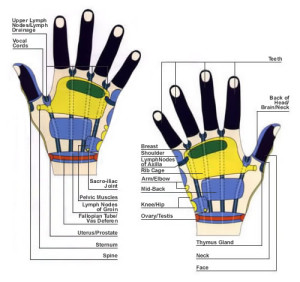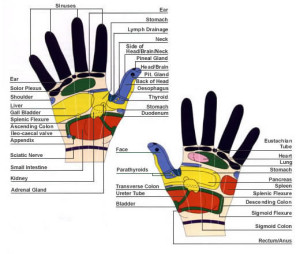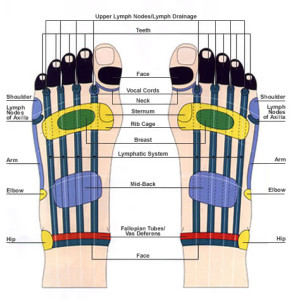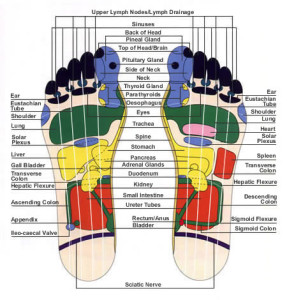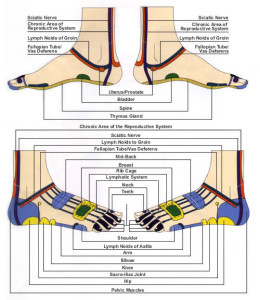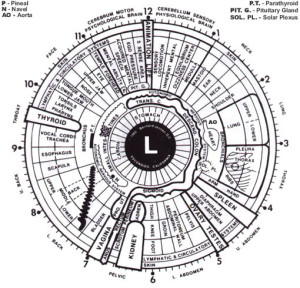 Iridology, also called iris analysis or iris diagnosis, is the study of the iris (the colored part of the eye). Iris “readings” are made by iridologists to assess a person’s health picture (physical, emotional, mental, and spiritual) and guide them to take measures to improve their health.
Iridology, also called iris analysis or iris diagnosis, is the study of the iris (the colored part of the eye). Iris “readings” are made by iridologists to assess a person’s health picture (physical, emotional, mental, and spiritual) and guide them to take measures to improve their health.
Iridology is generally based on the concept of neural pathways between the body and the iris. Although iridologists may differ on the exact mechanism, most maintain that the iris reflects what is happening throughout the body via nerve conduction from all parts of the body to the eye. The client’s health is assessed by the iridologist, who interprets patterns, shapes, rings, colors and pigmentation markings, fibers, structures, and changes in the pupil and iris. Many iridologists also use sclerology (reading the lines in the white part of the eyes) in their health evaluation.
iridology readings are typically performed by such holistically oriented practitioners as naturopaths, chiropractors, or nutritionists. The reading may be done using a bright light, a magnifying glass, and a notepad. The iridologist may also use various tools to better view the eye, a special camera to take pictures of the iris, and/or a computer.
Iridologists conduct their readings using charts on which each area of the iris is mapped to a specific body system or organ. iridology charts vary, with at least 20 different ones in existence. Some charts are more widely used than others; however, many iridologists believe that there is more than one correct map and that each practitioner should become familiar with several charts. Some iridologists even develop their own charts. Differences also exist among practitioner techniques; among American, European, and other approaches; and in the interpretation of specific iris signs.
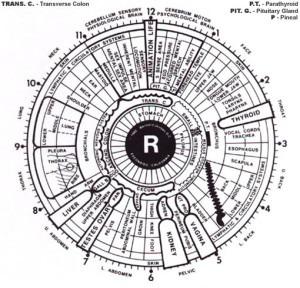 Iridology charts divide the iris into numerous zones corresponding to different parts of the body. Although the specifics may differ on each chart, all share a general pattern. The left eye is mapped to the left side of the body and the right eye to the right side. The top of the eye is mapped to the upper body (e.g., brain, face, neck, chest and heart). The center of the eye is mapped to the stomach and digestive organs, with other organs being represented by concentric circular zones moving outward toward the edge of the iris. The bottom of the eye is mapped to the legs and lower half of body. Paired organs (e.g., the kidneys) are mapped to both irises.
Iridology charts divide the iris into numerous zones corresponding to different parts of the body. Although the specifics may differ on each chart, all share a general pattern. The left eye is mapped to the left side of the body and the right eye to the right side. The top of the eye is mapped to the upper body (e.g., brain, face, neck, chest and heart). The center of the eye is mapped to the stomach and digestive organs, with other organs being represented by concentric circular zones moving outward toward the edge of the iris. The bottom of the eye is mapped to the legs and lower half of body. Paired organs (e.g., the kidneys) are mapped to both irises.
Using a holistic approach that considers each client as an individual with unique health patterns and concerns, behaviors, and experiences, the iridologist will examine the eyes and make a health assessment. Based on the results of that reading, the iridologist generally recommends a wellness program tailored to the individual’s physical, emotional, and life situation. This program may incorporate various health improvement, maintenance, and prevention regimes. Recommendations may include vitamins, minerals, herbs, supplements, and/or diet and nutrition, among other suggestions.
History Of Iridiology
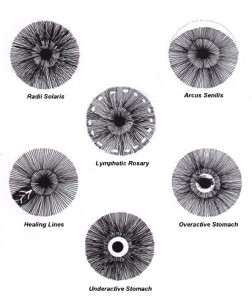 The basic concept of iridology has existed for centuries. The medical school of the University of Salerno in Italy offered training in iris diagnosis. A book published by Philippus Meyers in 1670, called Chiromatica medica, noted that signs in the iris indicate diseases. Dr. Ignatz von Peczely, however, is generally considered the father of iridology, with the date of his discovery given as 1861. Von Peczely was a Hungarian physician. As a child, he accidentally broke an owl’s leg. He observed that a black line formed in the owl’s lower iris at the time of the injury. After the owl’s leg healed, the young von Peczely noted that the black streak had changed appearance. As a physician, he treated a patient with a broken leg in whose eye he observed a black streak in the same location as on the injured owl’s iris. Von Peczely became intrigued by the possibility of a connection between diseases and eye markings. Through observing his patients’ eyes, he became convinced of this connection and developed a chart that mapped iris-body correlations. After several decades of comparative study, von Peczely mapped organs across zones identified by hours and minutes on a clock face superimposed over drawings of the eyes. In 1881, he published his theories in a book called Discoveries in the Field of Natural Science and Medicine: Instruction in the Study of Diagnosis from the Eye.
The basic concept of iridology has existed for centuries. The medical school of the University of Salerno in Italy offered training in iris diagnosis. A book published by Philippus Meyers in 1670, called Chiromatica medica, noted that signs in the iris indicate diseases. Dr. Ignatz von Peczely, however, is generally considered the father of iridology, with the date of his discovery given as 1861. Von Peczely was a Hungarian physician. As a child, he accidentally broke an owl’s leg. He observed that a black line formed in the owl’s lower iris at the time of the injury. After the owl’s leg healed, the young von Peczely noted that the black streak had changed appearance. As a physician, he treated a patient with a broken leg in whose eye he observed a black streak in the same location as on the injured owl’s iris. Von Peczely became intrigued by the possibility of a connection between diseases and eye markings. Through observing his patients’ eyes, he became convinced of this connection and developed a chart that mapped iris-body correlations. After several decades of comparative study, von Peczely mapped organs across zones identified by hours and minutes on a clock face superimposed over drawings of the eyes. In 1881, he published his theories in a book called Discoveries in the Field of Natural Science and Medicine: Instruction in the Study of Diagnosis from the Eye.
A Swedish pastor and homeopath named Nils Liljequist also developed the concept of iris-body correlations at roughly the same time but independently of von Peczely’s work. He was the first iridologist to identify the effects of such drugs as iodine and quinine on the iris. Liljequist based his initial observations on changes in his own irises after illnesses and injuries, publishing writings and eye drawings during the late nineteenth century. One of his students, Dr. Henry Lahn, brought the practice of iridology to the United States. A variety of practitioners, primarily European, have sought to popularize iridology since these early works. Dr. Bernard Jensen, a chiropractor, is the best-known contemporary American advocate of iridology.
Benefits Of Iridology
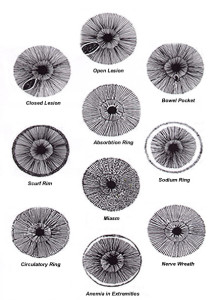 Iridologists claim that by studying the patterns of a person’s iris, they can provide helpful and accurate health and wellness information. iridology is a holistic endeavor in that it addresses the person’s whole being in the reading. The range of information gleaned encompasses physical, emotional, mental, and spiritual aspects of the person’s health picture. In addition to assessing the person’s general level of health, readings can reveal other data, including energy quotients; internal areas of irritation, degeneration, injury, or inflammation; nutritional and chemical imbalances; accumulation of toxins; life transitions; and subconscious tensions. Iridologists maintain that the eyes reveal information about the person’s physical and emotional constitution, such as inherited weaknesses and risks to which the person may be prone. Strengths may also be revealed, including inherited emotional tendencies from which the person derives particular talents. Cleansing and healing can be verified by changes in the iris. By looking for certain signs such as healing lines, iridologists obtain information about previous health problems and injuries and discover what may have gone wrong in the person’s past.
Iridologists claim that by studying the patterns of a person’s iris, they can provide helpful and accurate health and wellness information. iridology is a holistic endeavor in that it addresses the person’s whole being in the reading. The range of information gleaned encompasses physical, emotional, mental, and spiritual aspects of the person’s health picture. In addition to assessing the person’s general level of health, readings can reveal other data, including energy quotients; internal areas of irritation, degeneration, injury, or inflammation; nutritional and chemical imbalances; accumulation of toxins; life transitions; and subconscious tensions. Iridologists maintain that the eyes reveal information about the person’s physical and emotional constitution, such as inherited weaknesses and risks to which the person may be prone. Strengths may also be revealed, including inherited emotional tendencies from which the person derives particular talents. Cleansing and healing can be verified by changes in the iris. By looking for certain signs such as healing lines, iridologists obtain information about previous health problems and injuries and discover what may have gone wrong in the person’s past.
An iridology reading reflects the causes of problems, not symptoms. It may, iridologists claim, reveal that organs or systems are overstressed or predisposed to disease before clinical symptoms even develop. By predicting future problems, iridology can be used as a preventive tool. People can use the information from iridology readings to improve their health and make better behavioral choices in the future, thereby heading off problems before they occur.
In North America, iridology is generally considered to be an assessment tool to be used in cooperation with other health specialties. iridology is not a diagnostic tool (although it is more likely to be considered so by European iridologists) and should not be used to diagnose or name specific diseases. Not only would diagnosis represent an improper application of iridology according to many iridologists, as noted by the International iridology Research Association (IIRA), it could also be construed in many countries as practicing medicine without a license.

